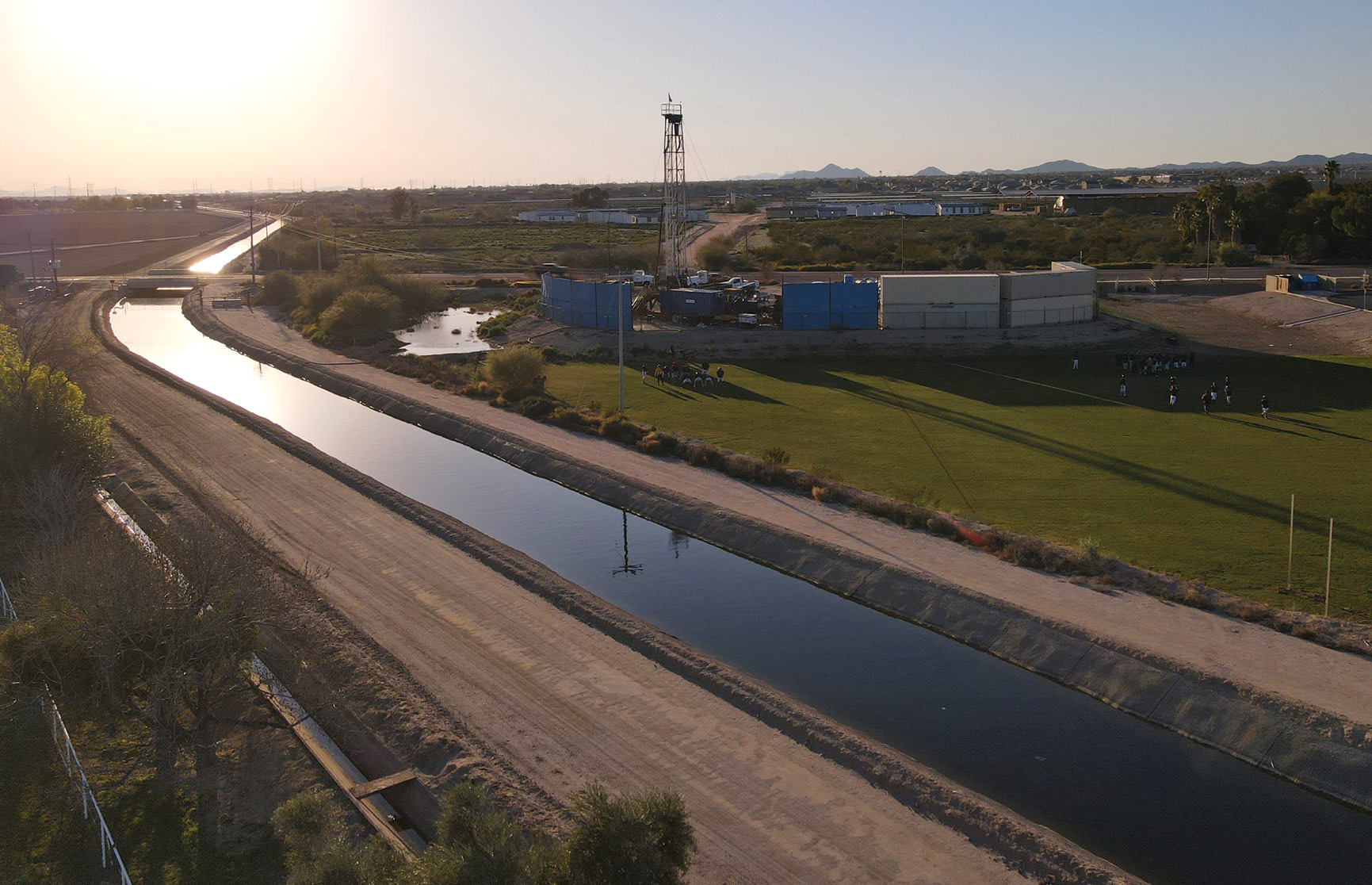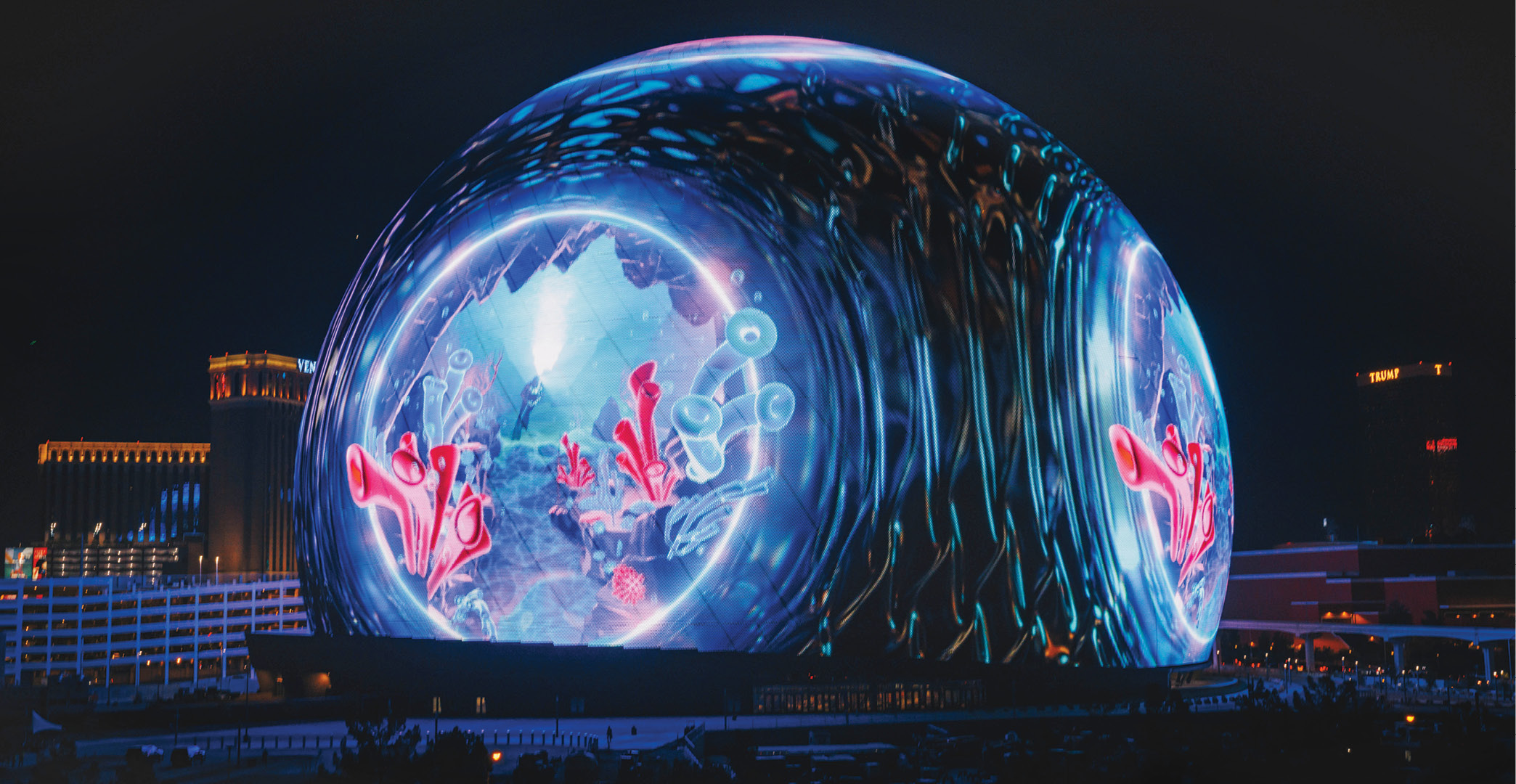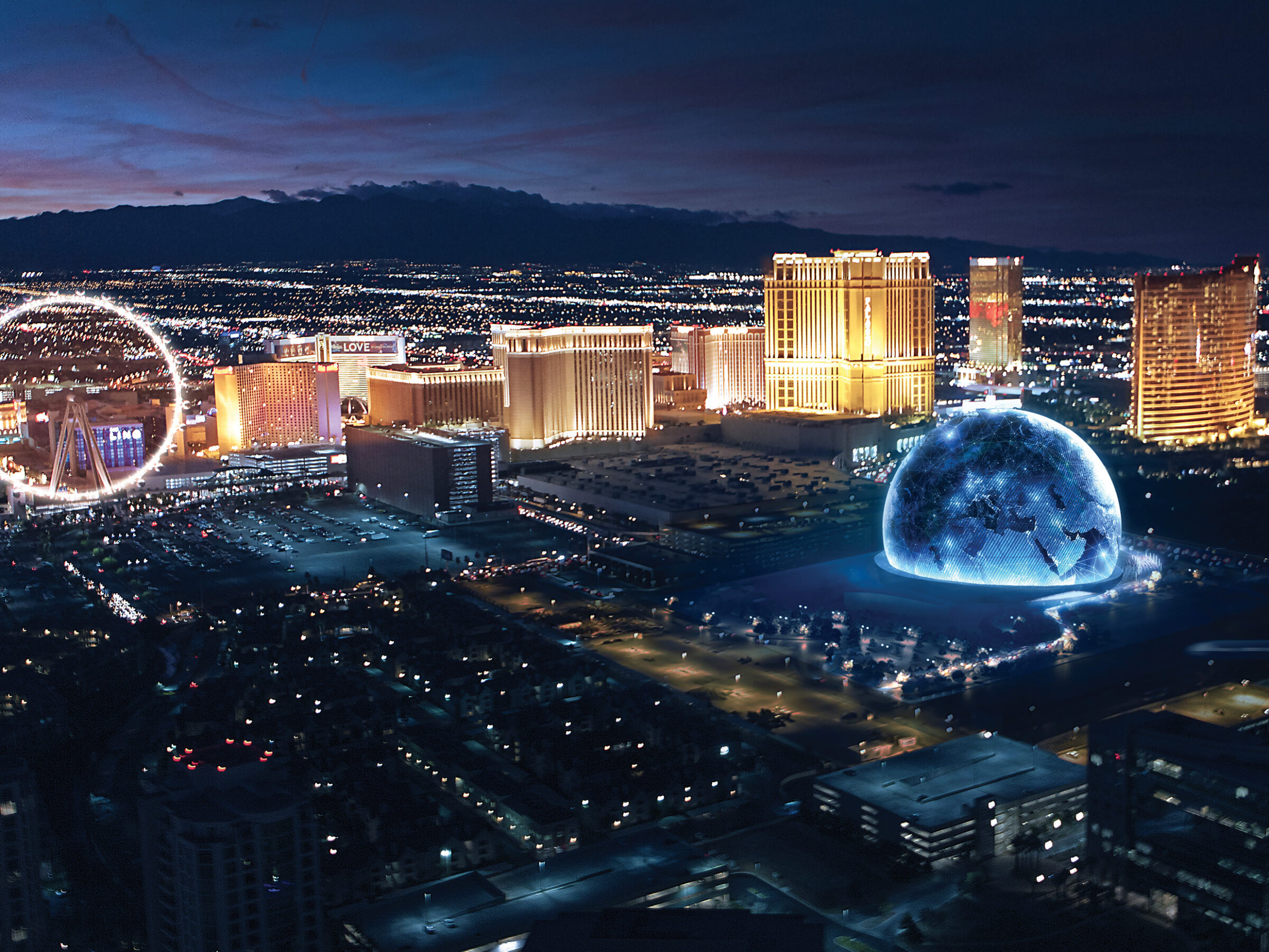By almost any demographic measurement, the large metro areas of the American Southwest are booming. From Texas to California, the biggest cities of this region keep getting bigger as people seek warmer climates, better job opportunities and a desirable quality of life.
According to the U.S. Census Bureau, 10 of the 15 fastest-growing large cities in the country are in this region. Many of these places are clustered around large metro areas like Phoenix, Las Vegas and Austin, which is not surprising given the economic vibrance of these metros.
We dug deeper into the numbers to find examples of communities that are thriving in the shadows of the bright lights of the big cities. Here are three cities to watch in the Southwest:
Buckeye, Arizona
In 2019, this western Phoenix suburb on Interstate 10 was the fastest-growing city in America. Since 2020, Buckeye has grown at the fourth-fastest rate in the U.S. It’s also become a magnet for large-scale industrial investments from companies such as Rehrig Pacific and Core Power.
To find out what’s driving this boomtown of 114,000 people, I turned to Suzanne Boyles, director of economic development for the City of Buckeye.
“We are 640 square miles. We are only 14% built out,” says Boyles. “Buckeye is going to be a huge part of future growth in Greater Phoenix.”
The Maricopa Association of Governments (MAG) projects that Buckeye will have 136,000 people by 2030 and 305,000 people by 2040. Fueling that growth are high-wage jobs.
“We are seeing growth in advanced manufacturing and energy,” says Boyles. “Rehrig Pacific, a California company, is relocating its manufacturing operations to Buckeye. They are a plastic injection molding company. They make plastic bins. We also have Core Power. They are a lithium-ion battery cell manufacturer. They are the first of its kind in the U.S. They will employ over 3,000 people here. Their batteries will be used in energy storage.”
I asked Boyles if corporate prospects ever ask her about the water supply in the community, and she addressed the issue head-on. “We do get that question a lot …. There is a lot of misunderstanding about it,” she says. “Buckeye’s water future is secure. We have water to support both existing residents and businesses in a 100-year supply. We have a diverse water portfolio that will allow us to grow for at least the next decade; and the community is doing several things to diversify our portfolio.”
She added that recent media reports have been misleading the public. “The news is giving out misinformation,” she says. “Reports in the news have not taken into consideration advanced water technologies and everything the city is doing. We are doing things like acquiring 2,000 acre-feet of Colorado River allocations. The city has purchased 6,000 acre-feet from the valley. The city recharges over 8,000 acre-feet of water in the aquifer per year. We sit on a large, water-logged area. We pump out a lot every day just to prevent flooding.”

“The biggest message here is: We are not out of water. Water in Buckeye is secure, and we have a diverse portfolio.”
— Suzanne Boyles, Director of Economic Development, City of Buckeye
The Las Vegas Sun reported on August 30 that “around Phoenix, one of America’s fastest-growing cities, the (water) crisis is severe enough that the state has said there’s not enough groundwater in parts of the county to build new houses that rely
on aquifers.”
Boyles says reports like that don’t tell the whole story. “Water is a local imperative,” she says. “Every city looks at water differently. Water in Buckeye is different than water in Mesa. The biggest message here is: We are not out of water. Water in Buckeye is secure, and we have a diverse portfolio.”
She points out that corporate investors remain bullish on Buckeye. “Next Era Energy, a large-scale solar project, is investing in Buckeye,” she adds. “We are exploring hydrogen and other sources of power. Energy generation is going to be just as imperative as water as we grow. We have a great relationship with Arizona Public Service [APS], our power provider. We can show prospects that we are growing and bringing in new resources.”
Ross Dress for Less and Five Below are opening new distribution centers in Buckeye to take advantage of its location on I-10 in western Phoenix, says Boyles. “We are the first major city you come to in the Greater Phoenix MSA. Trucks can serve the Ports of Los Angeles and Long Beach in an 11-hour turnaround time.”
Chris Camacho, president and CEO of the Greater Phoenix Economic Council, says that the growth and business attractiveness of Buckeye have become so pronounced that “it is now becoming an industrial juggernaut on the I-10.”

Photos courtesy of City of Buckeye
Camacho also disputes the notion of Arizona running out of water anytime soon. “Arizona is one of the few states that has assured water supply requirements for every piece of platted property,” he says. “We have been doing water planning longer than anyone. Unfortunately, people just talk about the Colorado River. Ground water, reservoirs and underground storage account for two-thirds of our water supply. Arizona today is using 1957 water consumption levels. We will continue to be good stewards.”
Henderson, Nevada
About 15 miles southeast of the tourist mecca of Las Vegas, close enough to see the dazzling light display of the Sphere, rests the booming city of Henderson, Nevada. Second only to Las Vegas in population in Nevada, Henderson today has 336,000 residents and ranks as one of the 20 fastest-growing cities in the country.
Jared Smith, director of economic development for the City of Henderson, says that “most of our business development pipeline has been interest from manufacturing companies. If we are going to grow the manufacturing sector, we know we have to increase the amount of available industrial land and train more people.”
To prepare for that growth, the city annexed 800 acres to the southeast called El Dorado Valley. On the city’s west side, Haas Automation is investing $327 million to build a 2.5-million-sq.-ft. plant just south of Henderson Executive Airport. Haas makes many of the machines that are used in manufacturing. Smith says the California company is hiring thousands of local workers to build the plant and then staff it upon completion.
“There are 1,000 acres of developable land for manufacturers in Henderson,” says Smith. “We are seeing interest in manufacturing, logistics and back-office operations. Barclays Bank has its western U.S. headquarters here. They are approaching 2,000 employees in the city.”
Lithion Battery Inc., which has been operating in Henderson since 2020, recently announced that it will expand its battery and storage production operations in the city. The company is expected to grow from 80,000 sq. ft. to more than 125,000 sq. ft. with the expansion. Its workforce will grow from 150 to 250 by the time the expansion is complete in 2024, Lithion President and CEO Tyler Armstrong said.
Like Buckeye, Henderson put measures in place “long before other states on water conservation,” says Smith. “Southern Nevada is a worldwide leader in water conservation. The Southern Nevada Water District makes sure of that. Industry is growing here because we have put conservation measures in place to allow industries to grow.”
That is also why Henderson does not recruit data centers, bottling companies or firms that require evaporating cooling in mass, Smith says. “Water is a concern anywhere in the West. We take this subject very seriously in Southern Nevada.”
Smith says it’s easy to see why firms are moving to Henderson. “Anybody that is doing manufacturing that services states in the West, they are considering Henderson. We are right in the middle of the wheel of Salt Lake City, Phoenix and Los Angeles. You can make a product and distribute it to all these markets from here. That is why we are getting a lot of looks.”
Las Cruces, New Mexico
Part of the Borderplex Region of El Paso, Texas, and Juarez, Mexico, Las Cruces is a city of 115,000 people and part of a metro area of 221,000 people. The Las Cruces MSA grew by 53.4% from 2000 to 2020, making it the second-fastest-growing metro in New Mexico and one of the top 10 fastest-growing in the country.
Davin Lopez, president and CEO of the Mesilla Valley Economic Development Alliance, calls Las Cruces the “smaller fish in the pond. We share common industries with El Paso and Juarez. We share manufacturing and a common defense industry.” (For more, see “Border Corridors” coverage elsewhere in this issue.)
Virgin Galactic, Blue Origin and Fort Bliss all have operations in Mesilla Valley. “We are the No. 1 pecan growing and chili growing region in the country,” says Lopez. “We produce 50% of the onions in the U.S.”
Overall, about 2.7 million people reside in the Borderplex Region. Around 1.5 million live in Juarez. Combined, the region is home to 150,000 college students at seven universities.
“As a region, we are the fifth-largest manufacturing hub in North America already,” Lopez says. “And we are one of the top 25 MSAs in the country.”
Southern New Mexico remains one of the regions in America most affected by drought conditions and unusually elevated temperatures. The Rio Grande River ran dry for the first time in 40 years in 2022. State and federal officials continue to look for funding and long-term solutions to alleviate the problem.
Approximately 40 miles south of Las Cruces, next to the Mexican border, Tesla supplier Hota announced recently that it will build its first U.S. factory in the town of Santa Teresa, New Mexico. The Taiwanese company said on Sept. 20 that it will construct a $99 million plant in what will be the firm’s first expansion beyond Asia.
Hota makes gears and other automotive components. The company estimates that it will complete construction of the facility by 2025.

Sphere Lights Up Las Vegas Skyline

When the $2.3 billion Sphere opened in Las Vegas on September 29, viewers were mesmerized by the sheer spectacle. Standing 515 feet wide and 366 feet high, the venue is unlike any other on the planet. Owned by Sphere Entertainment Company, an affiliate of MSG Sports, the venue boasts an 18,600-seat auditorium with a wraparound interior LED screen capable of 16K resolution. The exterior features 580,000 sq. ft. of LED displays. It took four years to build before finally opening to a sold-out crowd that came to see Irish rock band U2 perform live on stage on Sept. 29, the start of a 25-concert run.
Gary Barnett, senior vice president of brand strategy and creative development for Sphere Entertainment, said, “The Exosphere is more than a screen or a billboard. It is living architecture, and unlike anything that exists anywhere in the world.”
In a press release, the company said that the Exosphere consists of 1.2 million LED pucks, each spaced about 8 inches apart. Each puck contains 48 individual LED diodes; each diode can display 256 million distinct colors.

